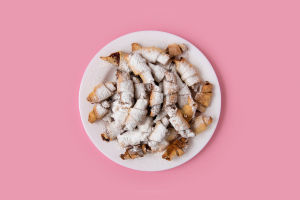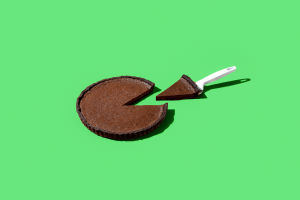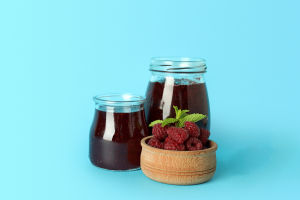Dehydrated pineapple is a top choice of dried fruit for everyone! If you haven't experienced it yet, you might be amazed at how much dried pineapple keeps its sweet and tangy taste.
What you get are small, tropical-flavored fruit pieces that complement granola, cereal, and salsa wonderfully.
Fresh Pineapple: Always the first choice! Fresh pineapples are sweetest and freshest from March to July, making them a must-have for dehydration.
Canned Pineapple: Yes, you can dehydrate canned pineapple! Opt for chunks or rings instead of shredded pieces. Rings take 14-18 hours in the dehydrator. Watch out for added sugar in canned varieties.
Frozen Pineapple Chunks: Simply defrost, blot dry with a paper towel, and they’re ready to go.
How To Dry Pineapple In a Dehydrator
Step 1 - Cut The Pineapple
If you’re using fresh pineapple, begin by cutting off the top and bottom to create a stable base. Stand the pineapple upright and slice down the sides to remove the skin. Once peeled, cut the pineapple in half lengthwise to expose the core. Remove the core from both halves by slicing it out. Then, cut each half into quarters and slice them into ¼-inch thick pieces. Finally, separate the fruit from the skin to yield neat chunks ready for dehydration.
For canned pineapple, drain the juice thoroughly and pat the chunks or rings dry with a paper towel. This step ensures that the extra moisture doesn’t prolong the dehydration process. If needed, cut the pineapple into smaller pieces of about ⅛-¼ inch thickness for even drying.
If you’re using frozen pineapple, allow it to defrost completely at room temperature. Once defrosted, blot each piece dry with a paper towel to remove excess water. This prevents uneven drying and ensures your pineapple comes out perfectly textured.
No matter which type of pineapple you choose, drying the pieces properly is crucial for a consistent and efficient dehydration process.
Step 2 - Load Your Dehydrator
Now that your pineapple is prepped, it’s time to load the dehydrator. Arrange the pineapple chunks or rings on the dehydrator trays, ensuring there is enough space between each piece for proper air circulation. This spacing is important because overcrowding can lead to uneven drying or prolonged dehydration times. A good rule of thumb is to cover no more than ¾ of the mesh tray surface.
Make sure the pieces are laid flat and not overlapping. Overlapping can trap moisture and cause some sections to remain soft while others become overly dry. Taking the time to arrange your pineapple carefully will give you a better final product.
8 Scientific Health Benefits of Pineapple
Video by Everyday Health
Step 3 - Dehydrate The Pineapple
Set your dehydrator to 135ºF (52ºC) for optimal results. The dehydration process typically takes between 10-14 hours, depending on the size of the pieces and the humidity in the room. It’s important to periodically check the pineapple and rotate the trays every few hours to ensure even drying across all levels. Some dehydrators may have specific instructions for rotating trays, so consult your manual for best practices.
You’ll know the pineapple is ready when the pieces are pliable but not sticky. They should feel leathery to the touch and show no signs of moisture when squeezed gently. If some pieces feel softer than others, you can extend the dehydration time slightly to achieve a uniform result.
How To Use Your Dried Pineapple
Dear Lykkers, add to trail mix or granola for an exotic twist.
Blend into smoothies for a sweet tropical touch.
Sprinkle over breakfast bowls or cereals.
Use as a stunning garnish for dishes or beverages.
Reasons You'll Love This Recipe
Homemade dehydrated pineapple does not contain any refined sugars that are typically present in store-bought dried pineapple. And, it's so sugary that it flavors like sweets.
Dehydrated pineapple is an excellent complement to homemade trail mixes. Alternatively, you can enjoy it by itself as a nutritious snack.
Dehydrating pineapple is really simple. You just require a pineapple and a dehydrator.
It's plant-based, gluten-free, and compatible with Whole 30.
Dehydrated pineapple is abundant in bromelain, manganese, and dietary fiber.


